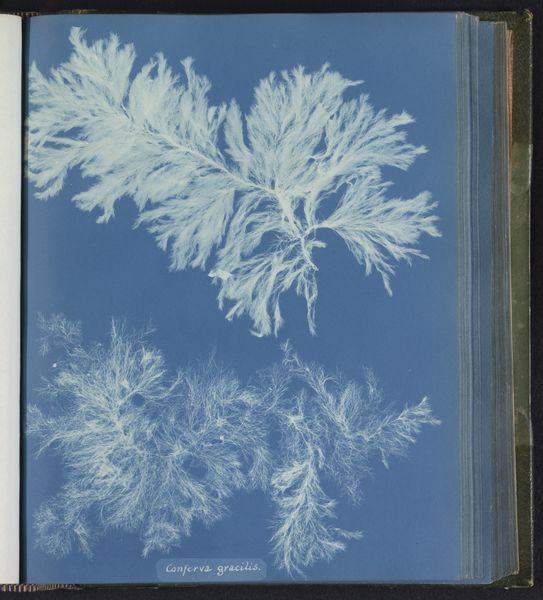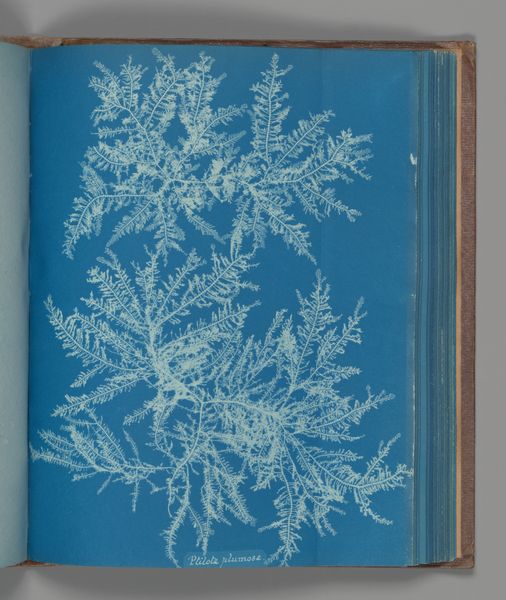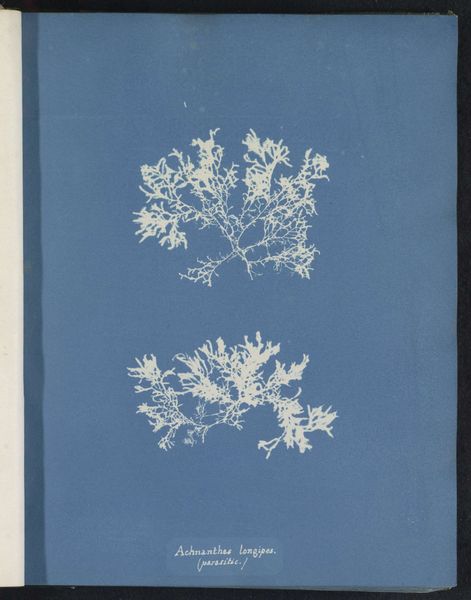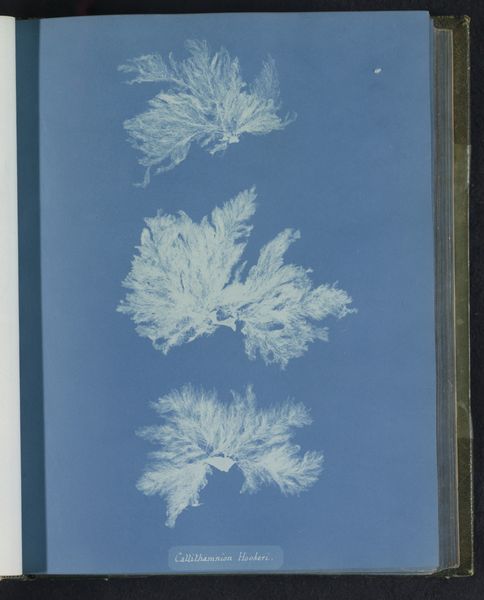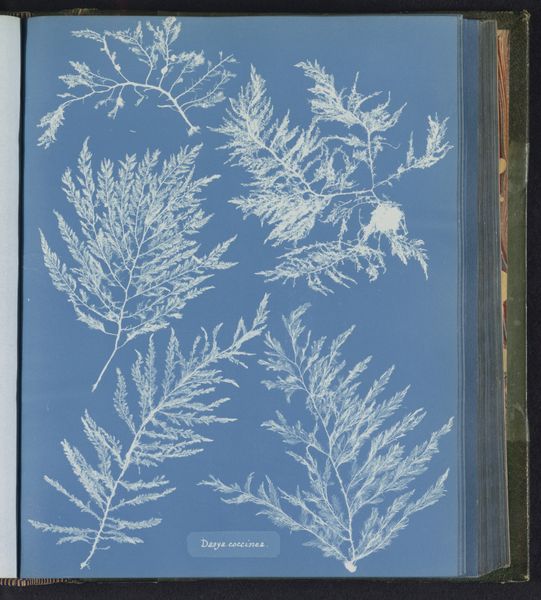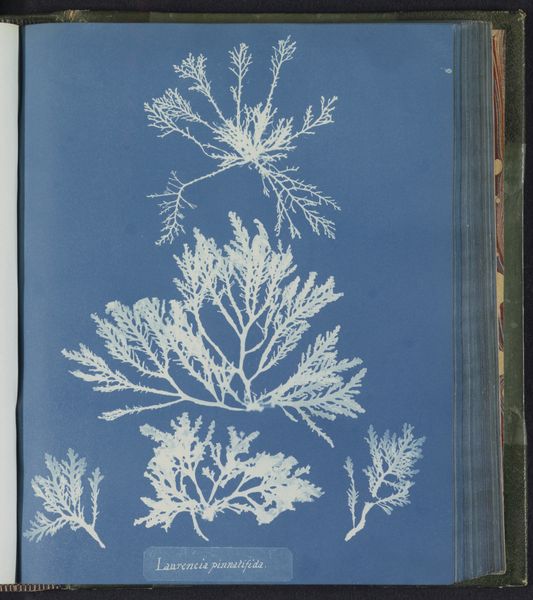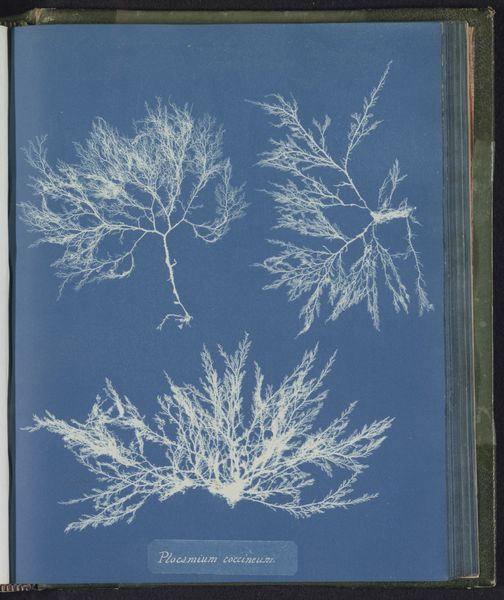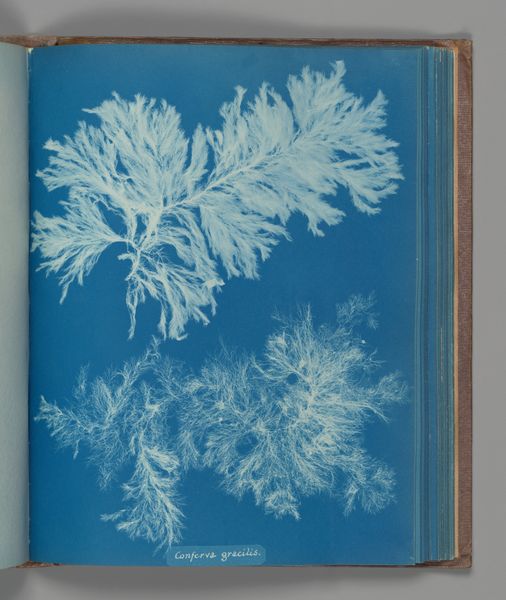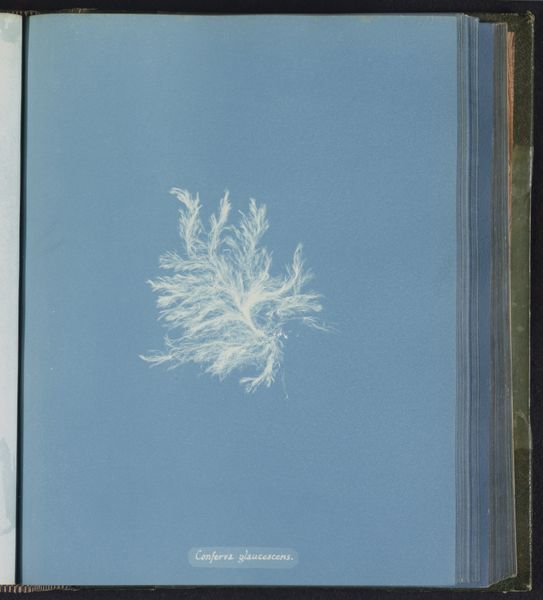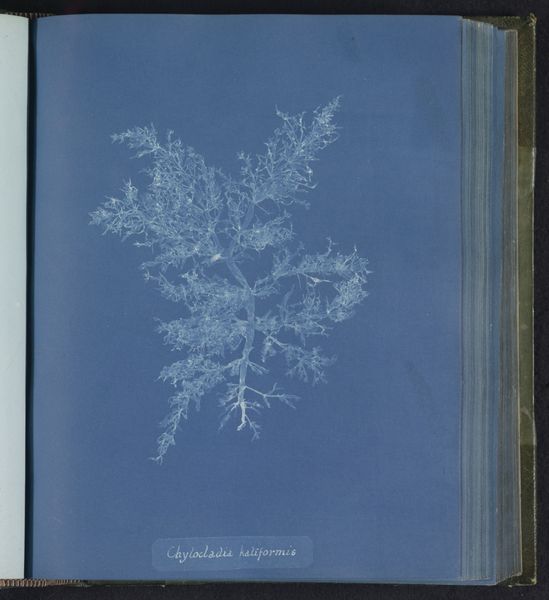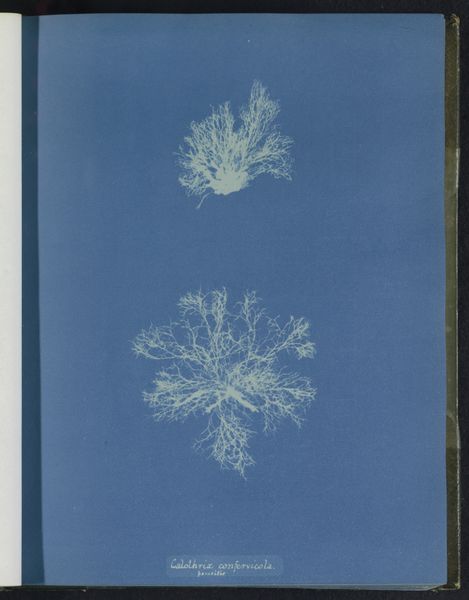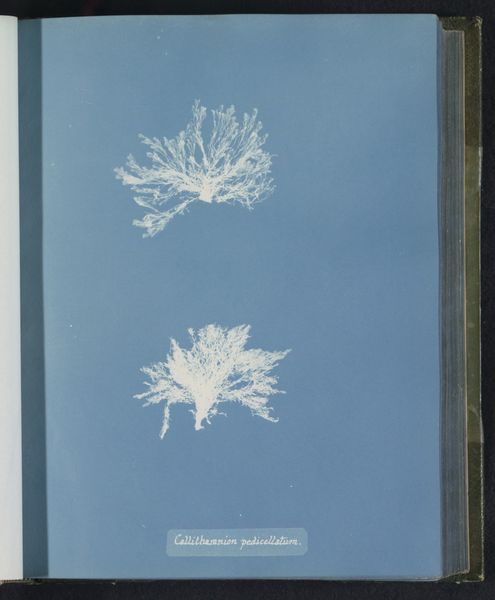
print, cyanotype, photography
#
still-life-photography
# print
#
cyanotype
#
photography
#
romanticism
#
realism
Dimensions: height 250 mm, width 200 mm
Copyright: Rijks Museum: Open Domain
Editor: Here we have Anna Atkins' "Ptilota plumosa," created sometime between 1843 and 1853. It's a cyanotype, so the image is a striking, almost ethereal, Prussian blue. What’s so captivating to me is its stark beauty. It’s simple yet elegant. What do you make of it? Curator: The cyanotype process itself speaks volumes about the public role of science and art at the time. Atkins wasn't just making pretty pictures; she was meticulously documenting botanical specimens. Think about it - photography was still brand new! This process offered an accessible way to reproduce images, directly challenging the traditional dominance of hand-drawn scientific illustrations. Who was her intended audience and how might these images been disseminated in the community? Editor: It's incredible to consider this as scientific documentation! So, the artistic beauty isn't necessarily the main goal? I wonder if that changed the perception of photography as an artistic medium, compared to painting or drawing? Curator: Exactly! The Royal Society, learned men... these are the circles she aimed to impress. Her step-father was deeply enmeshed within scientific circles. But was it perceived as art, science, or both? That ambiguity challenges our contemporary classifications and highlights how the Victorian era navigated the burgeoning intersection of art, science, and knowledge dissemination. Do you find a tension between scientific objectivity and artistic expression in it? Editor: Now that you mention that, I can almost see how photography's supposed "objectivity" allowed her to present factual records of specimens, whilst engaging artistically with composition and process. It gives agency to both creator and observer! So, in some ways it pushed the boundaries of both photography and traditional botanical illustration? Curator: Precisely! Think about how this influenced the rise of scientific publications incorporating photography, effectively democratizing access to visual information in a world still largely reliant on textual descriptions and hand-rendered illustrations. This artwork reflects how art is intertwined with public culture. Editor: This reframes the artwork, the scientific context, and accessible technologies, to inform knowledge as public awareness and societal impact, all because of one simple picture of algae. Thanks for sharing a broader understanding. Curator: My pleasure. It's precisely that interplay that keeps art history endlessly fascinating.
Comments
No comments
Be the first to comment and join the conversation on the ultimate creative platform.

